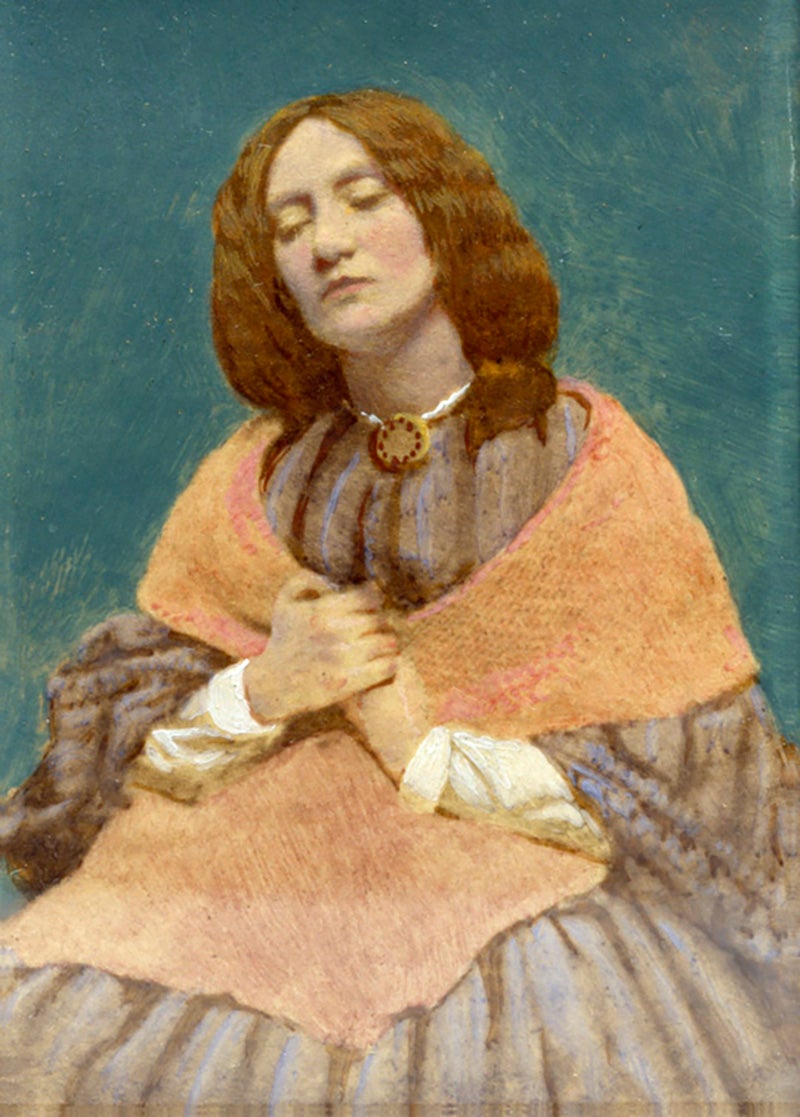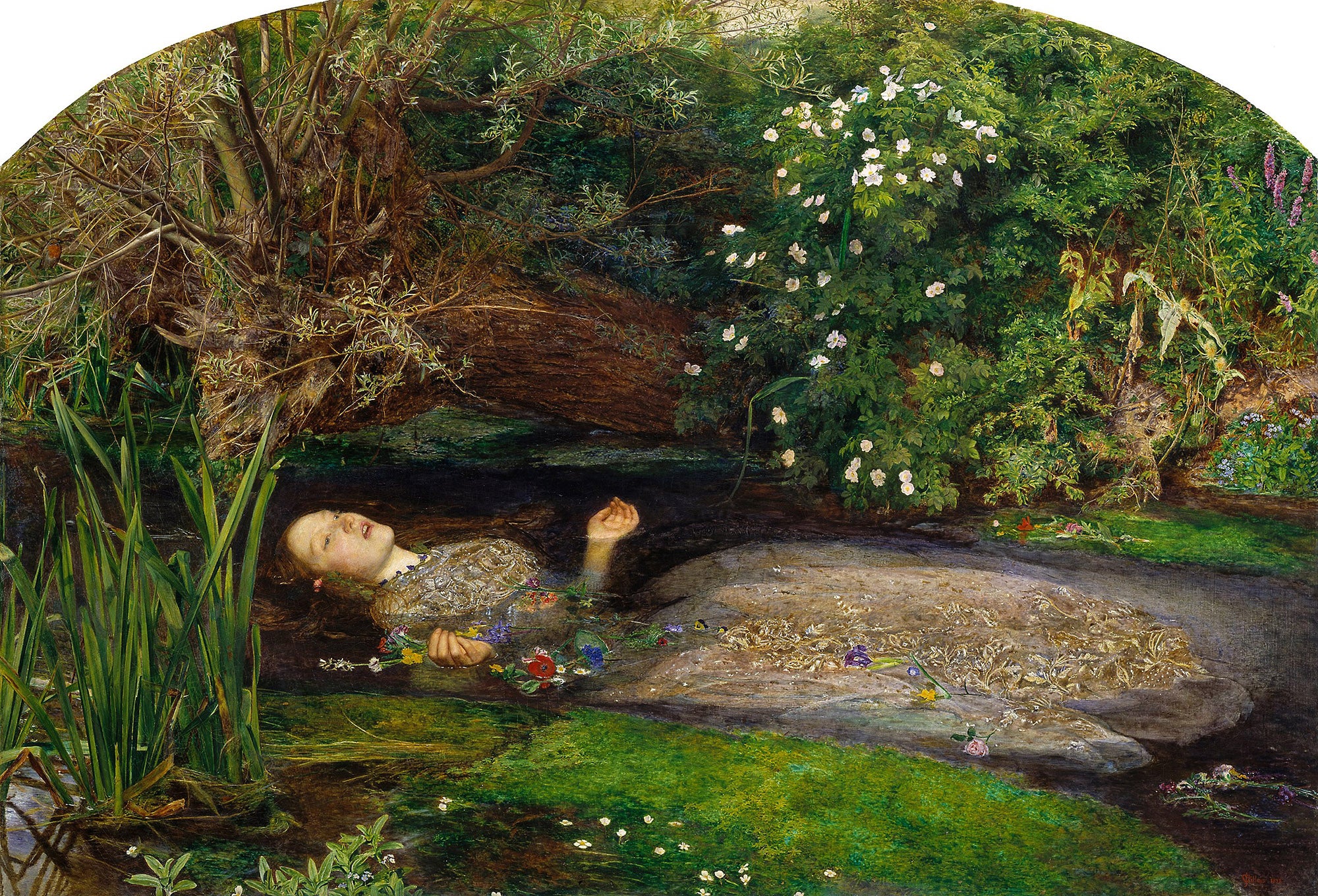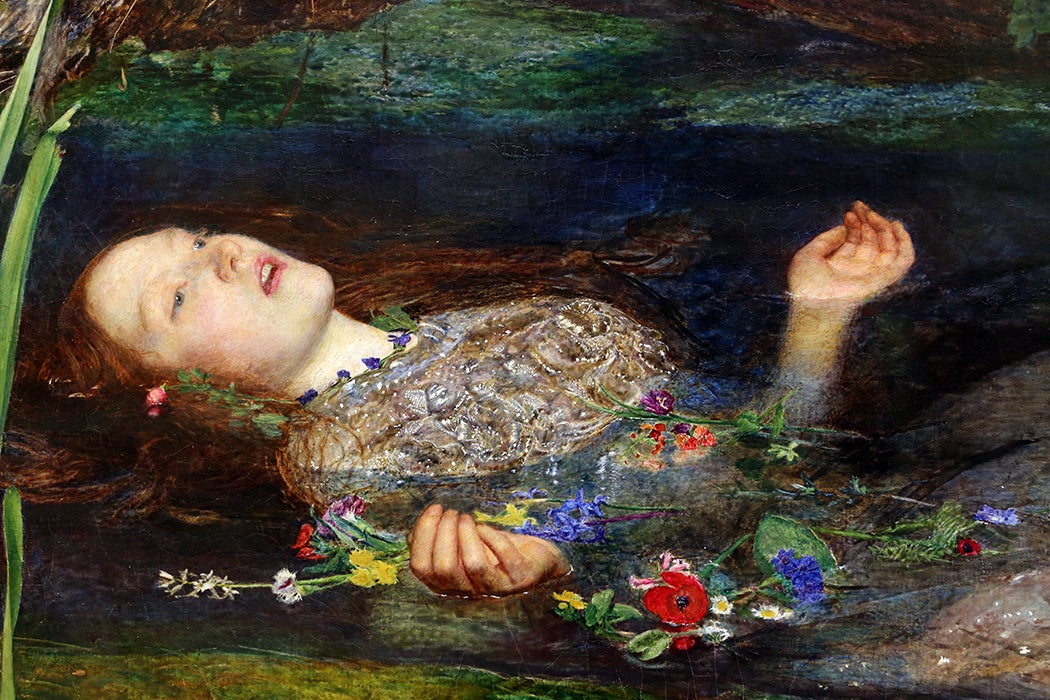The fate of Ophelia, the unfortunate love interest in Shakespeare’s Hamlet is one of the more tragic figures in Shakespearean lore. Rejected by Hamlet and grief-stricken by the death of her father Polonius, she drowns in a river, as reported by Queen Gertrude in Act IV, Scene VII. Stage performances aside, the image of her watery demise is seared in collective consciousness thanks to the Pre-Raphaelite artist John Everett Millais, who, in 1851, at a time when Victorian England was experiencing a cultural revival of appreciation for Elizabethan drama, decided to depict the off-stage scene of Ophelia’s suicide on canvas. What many don’t know is that in his pursuit to bring the long-dead Ophelia back to life, Millais (unintentionally) nearly killed his model, Elizabeth Siddal.

A tall, striking redhead with graceful mannerisms and a melancholy air, Siddal had been “discovered” in a milliner’s shop by the painter Walter Deverell, writes art historian Laurel Bradley. She was swiftly recruited by several Pre-Raphaelites as the ideal model for their romantic works. She eventually married artist Dante Gabriel Rossetti, though not before artists in his circle sketched and painted her into Pre-Raphealite perpetuity.
Siddal had her own aspirations as an artist. Art critic John Ruskin “was so impressed with her talents that he offered her a stipend of £150 per year,” writes Bradley. Siddal briefly attended the Sheffield School of Art, and she completed a small but “serious-minded and modestly successful oeuvre” before her death in 1862. Yet her work has often been overlooked by art historians.

“Her own achievements are slight—her work is appropriately derivative, a pale imitation of her husband’s,” writes historian Jan Marsh, summarizing common interpretations of Siddal’s art and character. “She is thus a delicate Cinderella, discovered by a Prince and raised from menial obscurity to be a Pre-Raphaelite princess.”
But Bradley wonders if Siddal would be better understood not as a powerless model, a “delicate Cinderella,” but as
a young woman who sought to become an artist in spite of great obstacles? As a woman of the nineteenth century who had not been born into an artistic family and who lacked money to pay for training, Siddal faced a considerable struggle.
Intent on becoming her own artist, Siddal may have seen modeling as her best entry point into the increasingly successful world of the Pre-Raphaelites. As such, she didn’t complain when Millais posed her in a heavy, antique wedding dress in a bathtub full of water in his studio on 7 Gower Street in London.
Float on your back. Raise your hands, palms up. Part your lips as if you’re singing a sad farewell song. These were his instructions, and she followed them to a T. Millais placed oil lamps and candles beneath the tub to keep the water warm for her. But he had more art sense than common sense. It was London; it was winter. The water always cooled. On one catastrophic occasion, the lamps and candles went out completely, nearly snuffing out Siddal’s life with them.
Weekly Newsletter
Siddal apparently didn’t complain when the water turned frigid. She had too much to lose, personally and financially. Millais, absorbed in his work, didn’t notice that she was suffering for his art. By the time he realized his mistake, it was too late. Siddal fell gravely ill that day and caught pneumonia. Her furious, poverty-stricken family forced him, under the threat of legal action, to pay the expensive doctor’s bill and a prescription for laudanum. This bout of illness marked the start of Siddall’s all-consuming addiction to the opioid, on which she would eventually overdose in 1862.
Millais’s painting of Siddal as Ophelia hangs today in the Tate Gallery in London, where viewers can see for themselves the immortalized martyrdom of a working-class English woman, metamorphosed into the world’s most recognizable version of Ophelia. Visitors are free to decide whether or not the masterpiece was worth the sacrifice of its model’s health.
Support JSTOR Daily! Join our new membership program on Patreon today.







